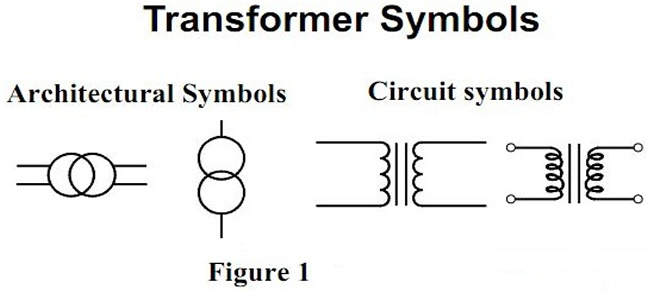Transformer
A transformer is an electrical device used to change the value of an alternating voltage. transformers are widely used in electrical work. They are encountered daily, in industrial, Commercial and domestic situations. They vary in size from miniature units used in electronics to huge units used in power stations. The efficient transmission and distribution of electricity throughout the country would be impossible without the use of power transformers.
Transformers are also used for safety reasons on construction sites when using power tools and in domestic bathroom situations in shaver units. They are used in doorbell operation and also to power electronic equipment, battery chargers, televisions, computers, alarm systems, etc.
Transformers vary considerably in construction, size and shape depending on their application.
All transformers rely on the principle of mutual inductance for their operation.

Transformers Construction
A transformer consists of two coils of wire called windings, which are wound onto a common iron core. The wire used in the two windings, primary and secondary, is coated with an insulating varnish. Both coils are wound onto, but insulated from the iron core. See Figure 2.
Transformers Principle
When a conductor or coil is moved in a stationary magnetic field it cuts the lines of magnetic flux and an EMF is induced in the conductor or coil. This same principle also applies when a conductor is held stationary and the magnetic flux is made to change or vary.
Now consider an alternating current applied to a stationary coil. A magnetic field will build up and collapse in the coil, continually rising and falling in harmony with the applied AC current as shown in Figure 3.
If a second coil ( coil 2 ) is placed close to the first coil ( coil 1 ) the alternating magnetic flux in coil 1 links with coil 2. See Figure 4. This results in an EMF being induced in coil 2. This is a process known as mutual induction.
If coil 1 and coil 2 are mounted on an iron core the magnetic flux around both coils will be concentrated. This arrangement of coils and an iron core form the complete device known as a transformer. See Figure 5
The input coil of a transformer is fed from the AC supply and is called the primary winding. The output coil, to which the load is connected, is called the secondary winding. It is important to remember that there is no electrical connection between the primary winding and the secondary winding of a transformer. The only common link between the two winding's is the magnetic field.
Turns and Voltage Ratio
The relationship between the number of primary winding turns (N1) and the number of secondary winding turns (N2) together with the primary input voltage (U1) and the secondary output voltage (U2) can be expressed as a ratio or equation as shown below.
Where:
N1 = Number of Primary Winding turns
N2 = Number of Secondary Winding turns
U1 = Primary Input Voltage
U2 = Secondary Output Voltage
This formula can be transformed to find any one unknown provided the other three are known.
SECONDARY CURRENT
By ohm’s law, the amount of secondary current equals the secondary voltage divided by the resistance in the secondary circuit. In fig.1 with a value of 100 Ω for RLand negligible coil resistance assumed.

POWER IN THE SECONDARY
The power dissipated by RL in the secondary is IS2 X RL or VS X IS, which equals 100 W in this example. The calculations are
It is important to note that power used by the secondary load, such as RL in fig.1 is supplied by the generator in the primary. How the load in the secondary draws power from the generator in the primary can be explained as follows
With current in the secondary winding, its magnetic field opposes the varying flux of the primary current. The generator must then produce more primary current to maintain the self-induced voltage across LP and the secondary voltage developed in LS by mutual induction. If the secondary current doubles, for instance, because the load resistance is reduced one-half. The primary current will also double in value to provide the required power for the secondary. Therefore the effect of the secondary –load power on the generator is the same as though RL were in the primary , except that in the secondary the voltage for RL is stepped up or down by the turns ratio.
CURRENT RATIO
With zero losses assumed for the transformer, the power in the secondary equals the power in the primary:

The current ratio is the inverse of the voltage ratio: that is, voltage step-up in the secondary means current step-down, and vice versa. The secondary does not generate power but only takes it from the primary. Therefore, the current step-up or step-down is in terms of the secondary current IS, which is determined by the load resistance across the secondary voltage.
